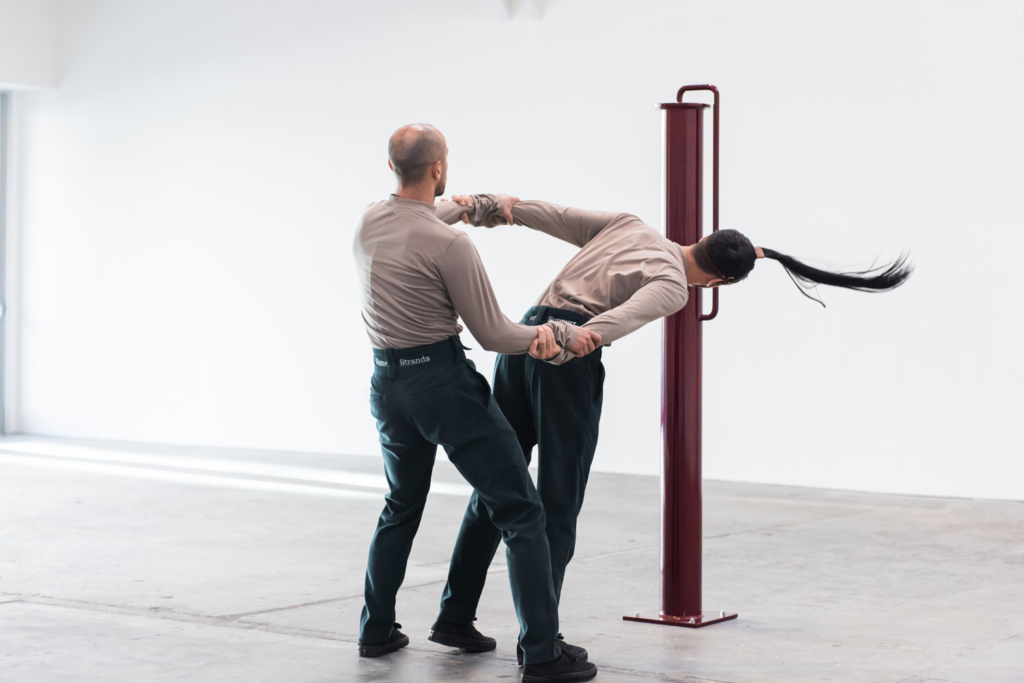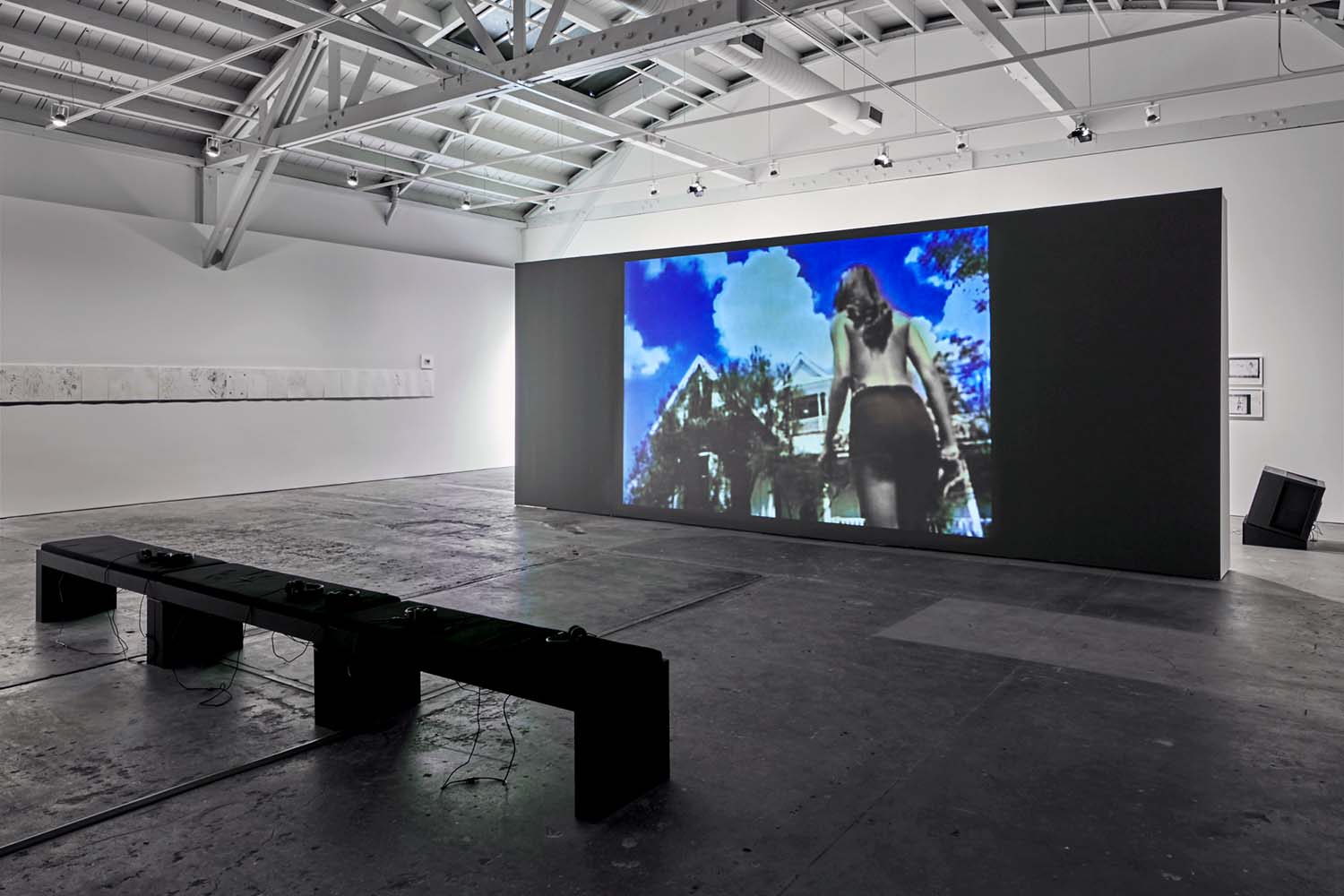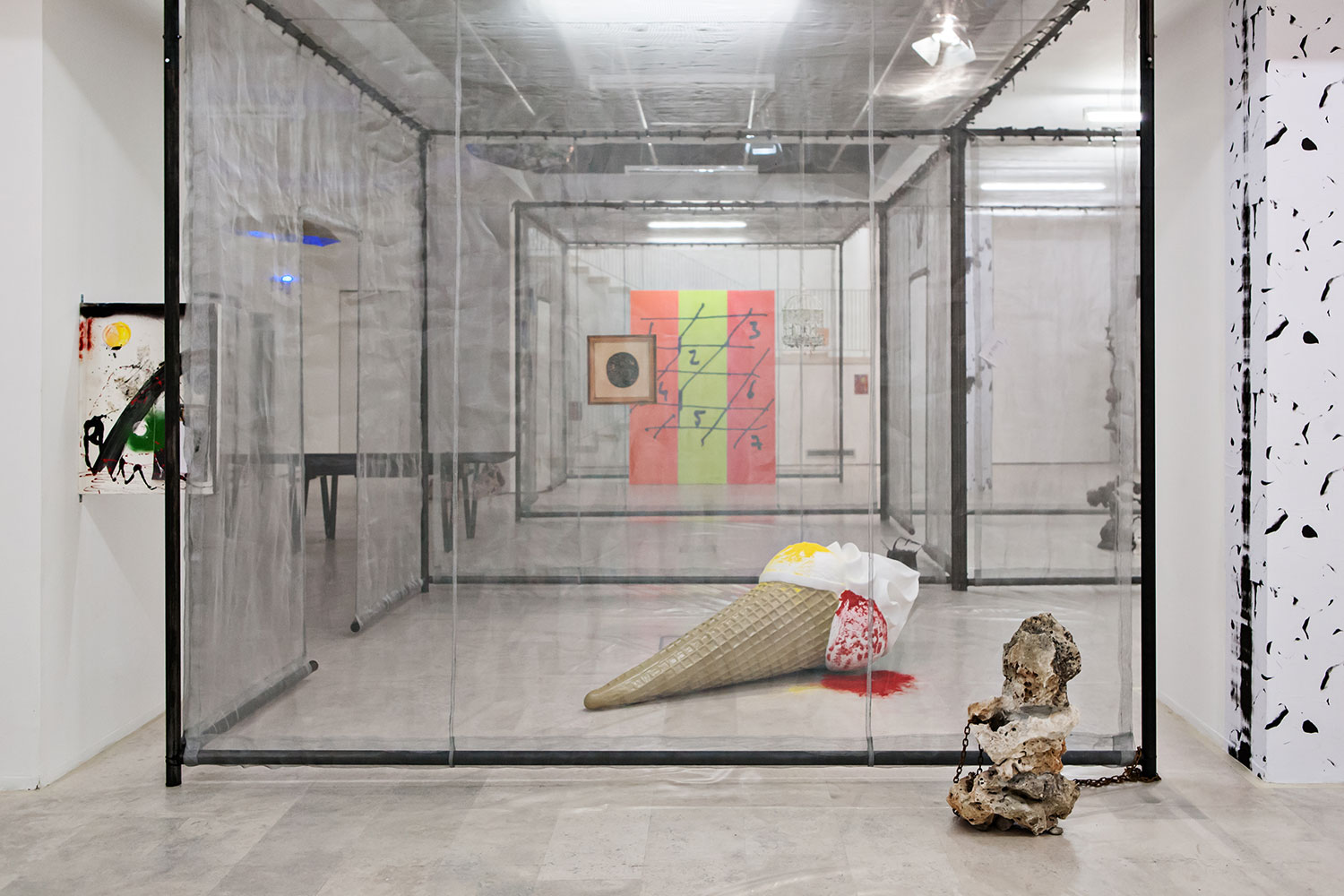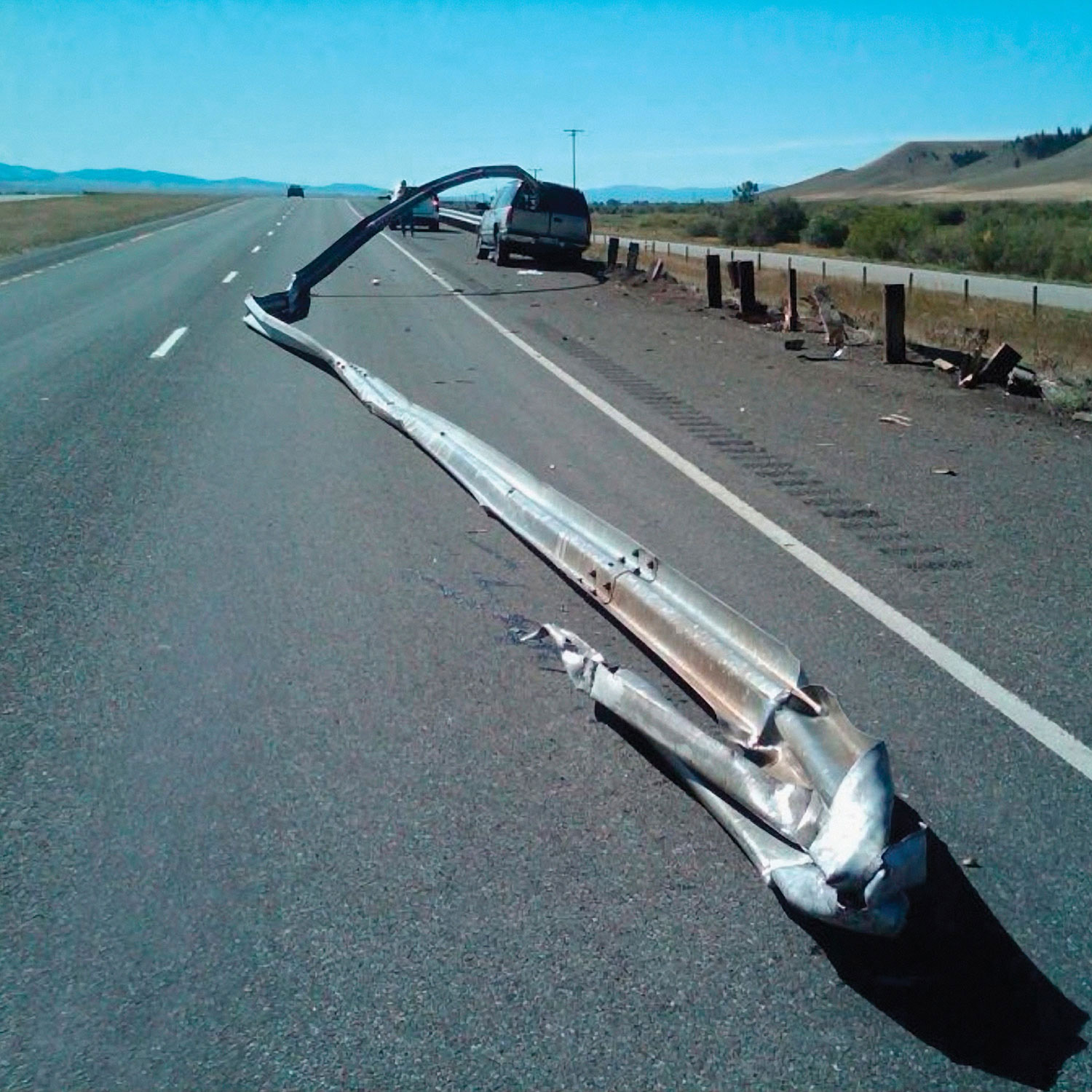Dance Office is a column dedicated to contemporary dance and performance art.

Unlike the typical, somewhat portentous activation of the white cube by way of performative dance, which has so intervened into more conventional exhibition programming over the past five years, Adam Linder’s “Full Service” at the Wattis posits the space itself as a paying client — gallery-goers are merely witnesses to the fruits of predetermined transactions.
Purporting to simultaneously thwart the taboo of the spectacle and reclaim the lure of individualistic virtuosity from the still-popular Judson/Rainer-esque utilitarianism that has permeated much of contemporary dance, Linder applies his consignable conception of choreography to the problematics of the service economy. Here, as is often the case, dance becomes intrinsically linguistic, framing a battery of questions: What precisely it is that the body does, or is doing? What does it remember? How does the body use its own specific experiences and conditions to turn its movements, learned or otherwise, into code or inscription? And — most relevant to the economic context within which Linder couches the political aspect to his work — how are such bodies compensated?

With a strict schedule of certain performances taking place on certain days, the show begins with a work perfectly emblematic of Linder’s nod to questions surrounding conditions of labor. Some Cleaning (2015), true to form, involves a single dancer making her way all around the perimeter of the gallery while signifying the washing of walls, sweeping of floors, and shining of surfaces with pantomime sincerity. In the gallery behind, a more complex artistic commentary titled Some Proximity (2014) unfolds. With three male dancers, hunkered in separate corners of the room with their own folding chairs and towels for their requisite breaks, the performance introduces language to movement through recitation and written text. Each dancer, over the course of the extended duration of the performance, takes turns taping large sheets of chicken-scratched notes onto the gallery walls, listing aloud the seemingly arbitrary observations scrawled therein. This activity is set to a deep, ambient soundtrack. Unbeknownst to viewers, the text is culled from a local art critic’s impressions on current exhibitions around town. While hanging papers on walls and reading the critic’s notes that reference “Andy’s piss paintings,” for example, the performer’s bodies twist and contort as they loop the paper around themselves, straining their necks in order to read their script. Though the energy is somewhat frenetic, the movements themselves remain smooth and gliding, and the performer’s pristine white tennis shoes rarely lose contact with the concrete floor as they moonwalk in no particular direction, as though there were some invisible wire around which their bodies unfailingly teeter.

The looming politics of the disconnect between labor and value to which these works allude is a conundrum that, depending on which end of the professional spectrum you fall, affects many within the creative industries writ large, but pervades broader swathes of the art world specifically. Few other commercial or cultural enterprises rely so heavily on the physical and intellectual work of often unpaid — and almost always underpaid — individuals. Like Linder’s unconventional roster of dancers and performers, whom he chooses not necessarily or solely for their formal technique, but for their character, cerebral work, and skill, the artist is utilized and exploited within both the art market and academic discourse not for an ability to work effectively as an administrator, but to have a compelling personality, specialized knowledge, and direct access to as vast as possible a network of advantageous players. With “Full Service,” much as the title implies, Linder emphatically focuses the exhibition on its very operations, even going so far as to invite Berlin/Los Angeles based Shahryar Nashat to create a sort of artistic time card for his dancers to symbolically punch. With that in mind, Nashat devised a wall piece that consists of five pink bulletin-board-like panels that feature copies of Linder’s contracts with the Wattis, detailing rates of pay, hours worked, and terms of service for each of the five performances that the institution bought. Each service commences with one of the dancers taking a large, sculptural, rope-textured frame off of a hook on the wall and haranguing the contract pertaining to whichever of the performances they are about to carry out. By so dogmatically highlighting the professional and industrial reality of the dancer’s work, Linder adjudicates the financial and hierarchical inequalities that plague contemporary art.

Whether or not the service economy, of which Linder conceptually refers, is most pertinent to the current conditions of the intersection between trade and value is somewhat questionable. Most economists trace the initial shift of the American economy from an industrially-centric to significantly service-based entity to the early 1990s, obviously long before the internet was introduced into our daily lives. Around 2005, though services remained in high demand, the attention economy became prevalent, as online traffic increased. Today, approximately a decade into life with iPhones, Twitter, Instagram and the rest, while both services and attention remain crucial forces that drive virtual marketing, the economy is geared instead toward efficacy, centering on the manipulation of AI, machine-learning, and big data. The services that both individuals and companies provide for customers are based not on interpersonal encounters but more often on routine and delivery, simulating the sensation of something custom-made through a series of algorithmically ranked personality traits that you provide through all of the choices and preferences you convey through digital behavior. In that context, Full Service seems, in fact, to make the case for the specialization of dance as opposed to the regulation of other monetized forms of labor — though nonetheless understood as a job done and paid for.



